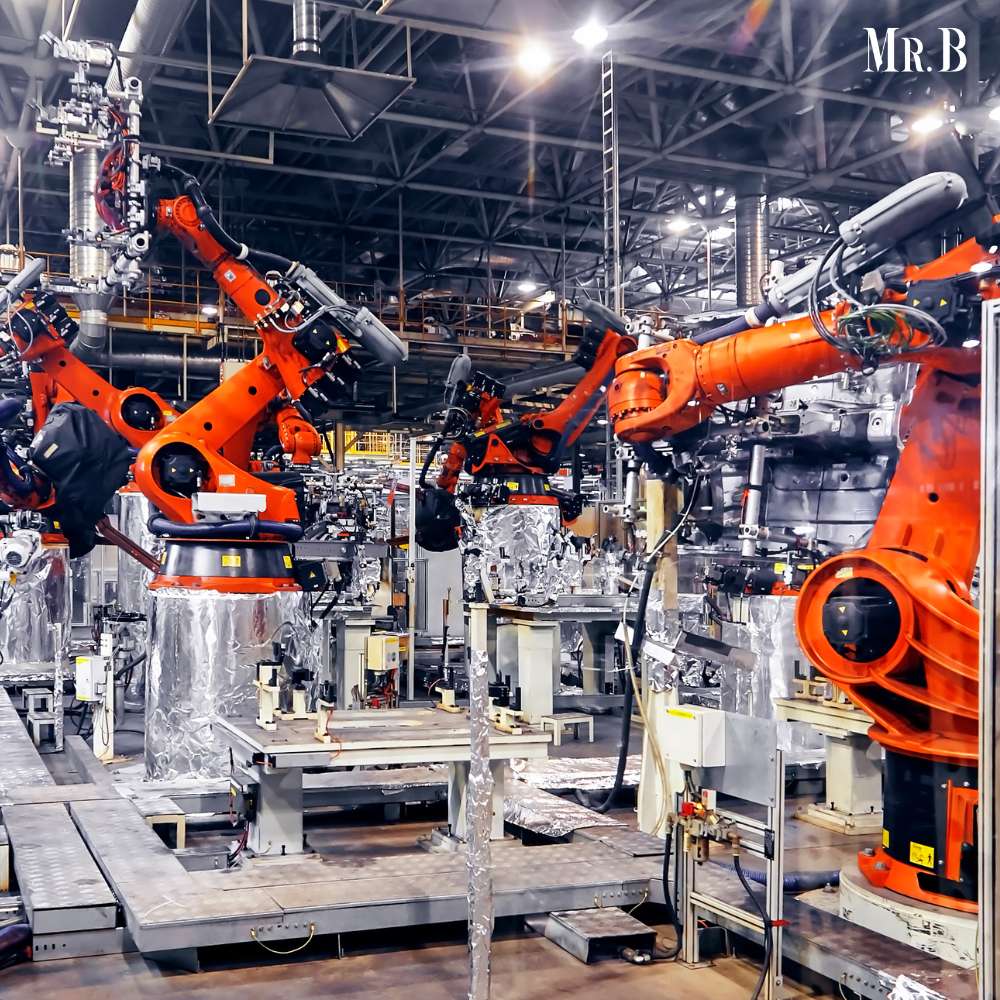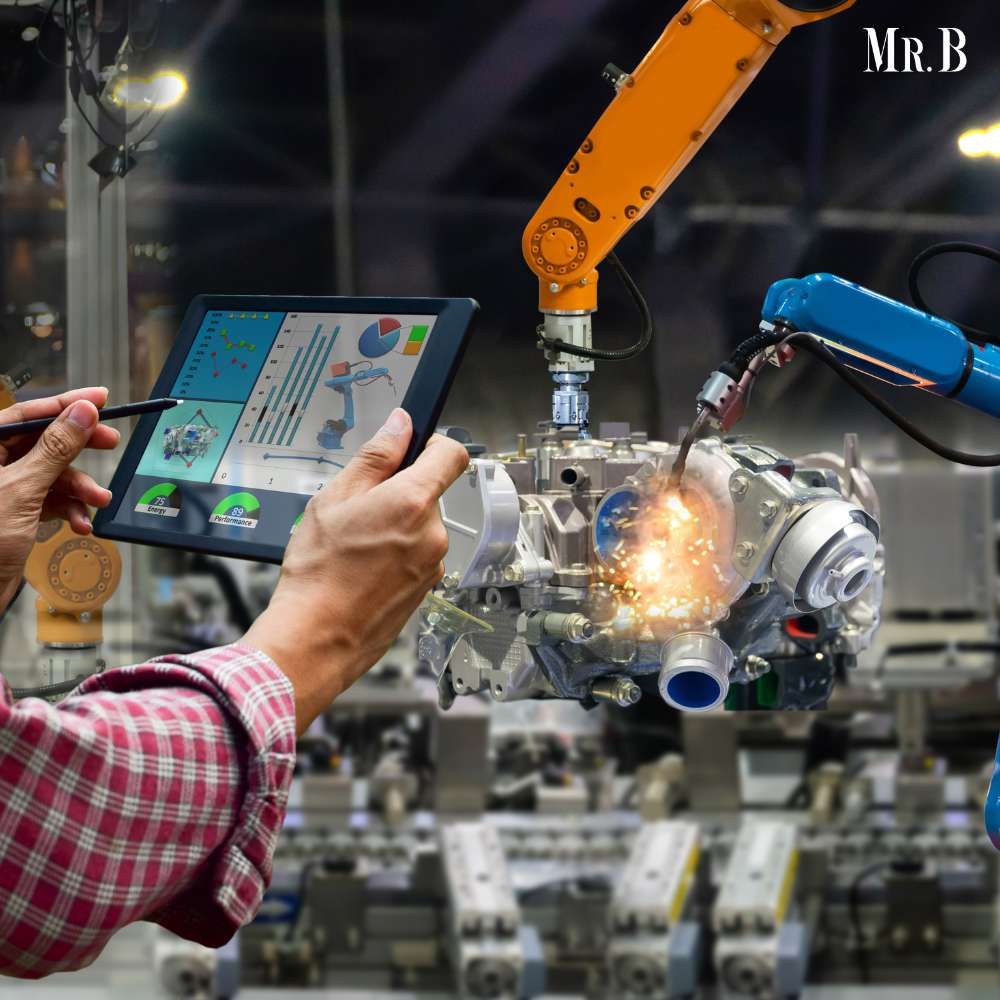The Impact of Automated Manufacturing on the Labour Market
- Category: Manufacturing

When machines replace humans in any form the fear of job loss becomes inevitable. The automated manufacturing has caused a fear for people in the manufacturing sector. It is a process characterized by the utilization of advanced machinery and robotics to perform tasks traditionally carried out by human labor, has become a cornerstone of efficiency and productivity for organizations across diverse sectors. In this article, we will delve into the implications of automated manufacturing on the labour market, elucidate its advantages for organizations, and explore strategies for addressing the challenges it poses.
The Evolution
Automated manufacturing, often referred to as industrial automation, has evolved from rudimentary mechanization to sophisticated robotic systems that can perform intricate tasks with precision. This evolution is driven by advancements in technologies such as artificial intelligence, machine learning, and robotics. The process involves the use of specialized machines and control systems to streamline production, enhance accuracy, and increase output.
Impact on the Labour Market
The widespread implementation of automated manufacturing has undeniably influenced the labour market, leading to shifts in job roles and employment dynamics. While the automation of routine and repetitive tasks has resulted in the displacement of certain jobs, it has simultaneously created new opportunities for individuals skilled in operating, maintaining, and programming these advanced systems. The net impact on employment depends on various factors, including the industry, the level of automation, and the adaptability of the workforce.
Organizational Advantages
Organizations embracing automated manufacturing reap a plethora of advantages that contribute to their long-term sustainability and competitiveness. Enhanced efficiency, reduced production costs, and improved product quality are among the key benefits. By automating repetitive tasks, businesses can achieve higher production rates, minimize errors, and ensure consistency in output. This not only leads to increased profitability but also positions companies favorably in the market due to their ability to meet stringent quality standards.

Strategies for Tackling Labour Market Challenges
As organizations transition to automated manufacturing, it is imperative to address the challenges posed to the labour market. One effective strategy is to invest in upskilling and reskilling programs for existing employees. By providing training in areas such as robotics programming, maintenance, and system oversight, organizations can equip their workforce with the skills necessary to adapt to the changing technological landscape. Additionally, fostering a culture of innovation and continuous learning within the workplace can empower employees to embrace and contribute to the automation process.
Furthermore, collaboration with educational institutions and industry bodies can facilitate the development of specialized training programs tailored to the needs of automated manufacturing. This proactive approach not only ensures a skilled workforce but also promotes a seamless transition to automation, minimizing disruptions in the labour market.
Why Automated Manufacturing Prevails?
The superiority of automated manufacturing over labour-intensive methods lies in its ability to deliver consistent, high-quality outputs while optimizing resource utilization. Automated systems operate tirelessly without the need for breaks, reducing downtime and increasing overall productivity. Precision and accuracy in manufacturing processes are significantly enhanced, leading to a reduction in defects and waste.
Moreover, automated manufacturing enables organizations to respond swiftly to market demands. Rapid reconfiguration of production lines and the flexibility to adapt to changing product specifications give businesses a competitive edge. This agility is particularly crucial in industries where time-to-market is a critical factor.

SEO-Friendly Integration
To cater to the evolving digital landscape and ensure visibility, it is vital to integrate SEO-friendly practices into content. Repeating the keyword “automated manufacturing” strategically throughout the article contributes to its search engine optimization. This ensures that the content aligns with the search intent of users seeking information on this transformative topic.
Disadvantages of Automated Manufacturing:
1. High Initial Costs:
One of the primary disadvantages of automated manufacturing for organizations is the substantial upfront investment required. The integration of advanced robotics, sophisticated machinery, and automation systems demands significant financial resources. Small and medium-sized enterprises (SMEs) may find it particularly challenging to bear these initial costs, potentially creating a barrier to entry and favoring larger corporations with more extensive financial capabilities.
2. Job Displacement:
The automation of routine and repetitive tasks can lead to job displacement within an organization. As machines take over certain functions, traditional job roles may become redundant, necessitating a reduction in the workforce. This displacement can have adverse effects on employee morale, organizational culture, and external perceptions of the company, potentially leading to challenges in talent retention and recruitment.
3. Maintenance Challenges:
While automated systems offer efficiency, they are not immune to technical glitches and malfunctions. Maintaining and troubleshooting these systems require specialized skills, and organizations must invest in training for maintenance personnel. Dependence on skilled technicians can create bottlenecks, especially if the workforce lacks the necessary expertise to address technical issues promptly.

4. Technological Obsolescence:
The rapid pace of technological advancements poses a risk of obsolescence for automated manufacturing systems. Organizations must continually upgrade their equipment and software to stay competitive. This cycle of constant upgrades can lead to a recurring financial burden, requiring ongoing investments in research and development to ensure that the technology remains current.
5. Dependency on Skilled Personnel:
Successful implementation and operation of automated manufacturing systems rely heavily on skilled personnel. Organizations may face challenges in recruiting and retaining individuals with the necessary expertise in robotics, programming, and system oversight. The shortage of skilled workers in these fields can hinder the seamless integration and optimization of automated processes.
Conclusion:
The advent of automated manufacturing has reshaped the dynamics of the labour market, presenting both challenges and opportunities for organizations. By acknowledging the impact of automation on employment and implementing strategic measures such as upskilling initiatives, businesses can navigate the transition effectively. The advantages of automated manufacturing, including increased efficiency, cost savings, and improved product quality, position it as a transformative force in modern industry. As industries continue to evolve, embracing the potential of it becomes imperative for sustained growth and competitiveness in the global market.







